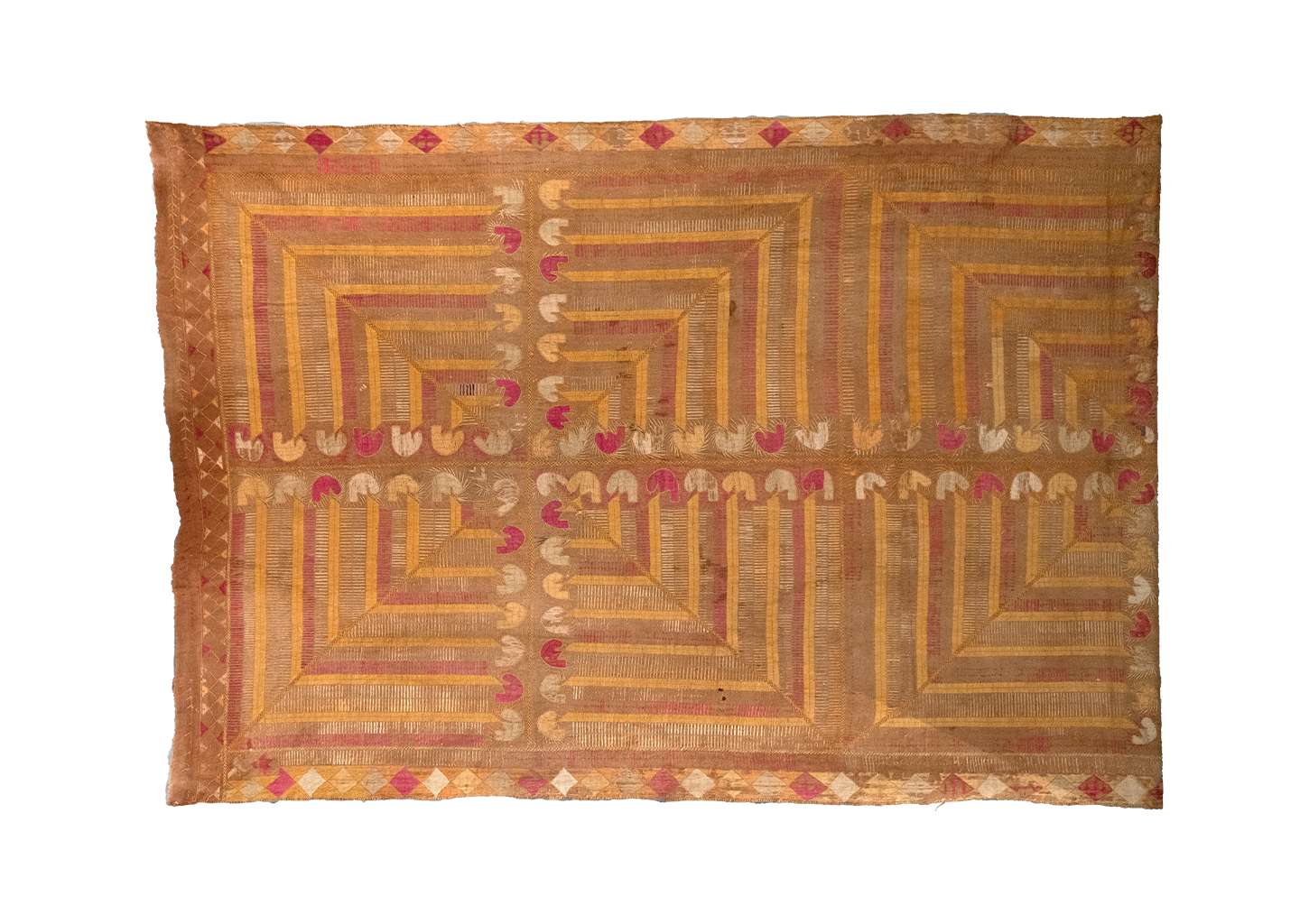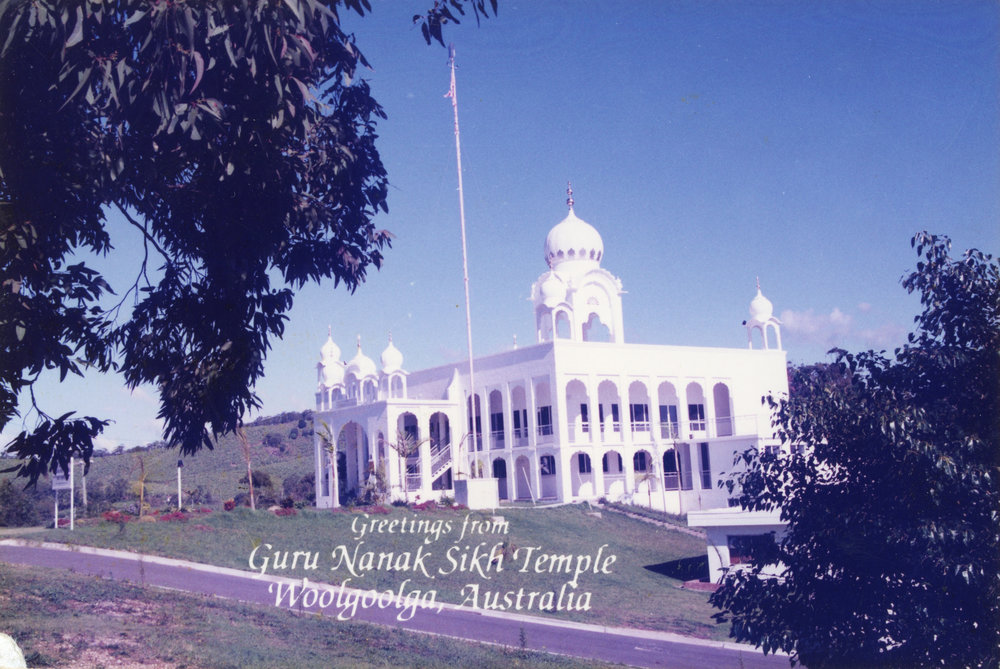Punjabi girls in the mid-nineteenth century started preparation for their marriage from a very early age with their trousseau. After completing household chores, girls eagerly gathered in groups at each other’s houses to spin cotton and sew and embroider items such as pillowcases, sheets, cushion covers, and the saalu for their true home after marriage. The saalu is a large-sized shawl which is draped around the bride in addition to her wedding attire to indicate the status, wealth, and social standing of the family.
The saalu worn by Joginder Kaur Arkan [1934-2022] at her wedding in 1954 was brought with her from her home in the Punjab when she migrated to Australia in 1957. It is made of cotton which was picked, hand-spun, and embroidered by Mrs. Arkan herself. The provenance of the saalu is well-established and has been confirmed by firsthand accounts from members of Mrs. Arkan’s family.
Whilst similar saalus were common at the time of Mrs. Arkan’s wedding, they no longer take this form; modern materials and production methods negating the need for such labor-intensive work. As such, it is representative of a traditional art form which is no longer practiced.
Mrs. Arkan was one of the first Sikh brides to settle in Woolgoolga in 1957, and her life experiences have mirrored the history of the Sikh community there. From humble beginnings living in a hut on a banana plantation and being unable to speak English, Mrs. Arkan was able to raise six children on a widow’s pension, learn to speak fluent English, and eventually purchase two properties in her own right. She became a trailblazer for women in the Sikh community. She also traveled widely in the area, teaching school children about Sikh language and culture, thereby fostering greater understanding between the Sikh and Australian communities.

